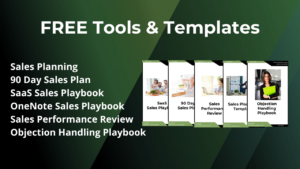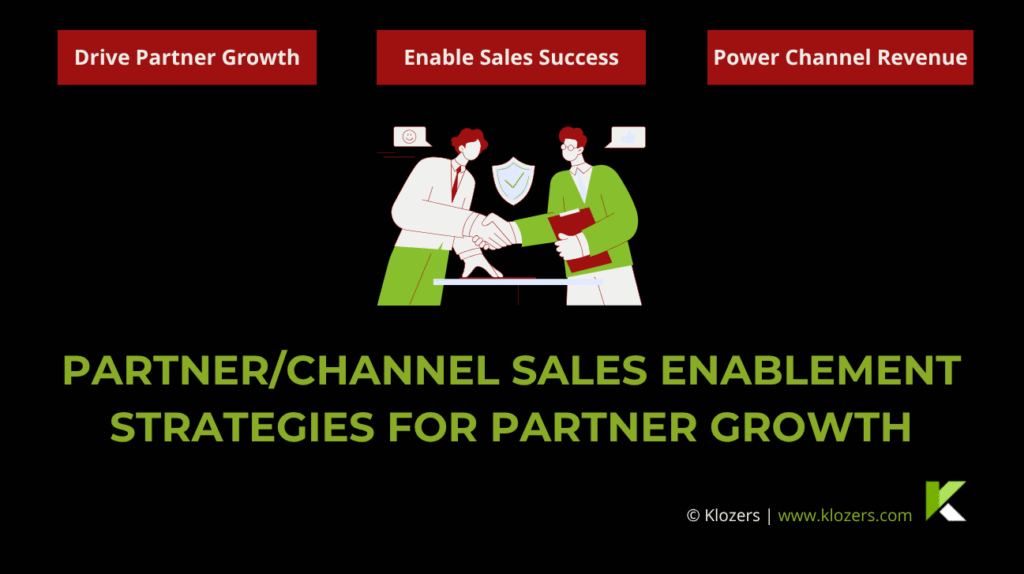Partner/Channel Sales Enablement - Top Question From Google:
What is Channel Sales Enablement?
Channel sales enablement is the process of equipping your partner network with the tools, training, and resources they need to sell your products effectively. It requires giving partners the same level of knowledge and support that your internal sales team gets, so they can represent your brand confidently and close deals successfully.
Free access to our best tools and templates
Introduction: Partner/Channel Sales Enablement
Many companies today thrive on partner and channel sales. Instead of hiring and managing large internal sales teams, businesses are turning to external partners who already have relationships with target customers. However, these partners often work with multiple vendors and may not prioritize your products without proper support.
This is why you need a strong partner enablement program that makes your partners feel like an extension of your team. When partners understand your products, know how to handle objections, and have access to the right tools, they become powerful advocates for your business.
Core Elements of Effective Partner/Channel Sales Enablement
Comprehensive Training Programs
Effective partner enablement starts with training. Your partners need to understand the problems your solution solves and the business impact it creates. They also need to know how to communicate that value to different types of buyers.
You can create regular training programs such as webinars and workshops to keep partners up-to-date on new products, market trends, and sales strategies. This training should be practical and immediately useful. Instead of lengthy presentations about technical specifications, focus on real scenarios that partners encounter with their customers.
Role-playing exercises also work well. Partners can practice in a safe environment so that when they face similar situations with actual prospects, they’ll respond with confidence.
Easy Access to Sales Tools and Resources
Partners need the same quality of sales materials that your internal team uses, and they need them to be easily accessible. You can create a partner portal where they can quickly find case studies, competitive battle cards, pricing information, and presentation templates.
Make sure your materials are customizable so partners feel ownership over the sales process, but still ensure consistency in how your product is presented to the market.
Ongoing Support and Communication
Your most successful partners will be those who receive consistent support and regular communication from your team. This includes responding quickly to their questions and providing updates about product changes and market trends.
Consider assigning dedicated partner managers who can build relationships with partners and understand their specific challenges. These managers can then provide support and additional training or resources.
Checking in with partners regularly also helps you understand what’s working and what isn’t in your enablement program. Partners will tell you if the tools are difficult to use, or if they need support in areas you haven’t considered.
Strategies for Driving Growth Through Partner/Channel Sales Enablement
Create Tiered Partner Programs
Not all partners are the same, and your enablement approach shouldn’t treat them as if they are. Certification programs add credibility, help assess partner capabilities, and identify top performers, fostering engagement and commitment. Use these programs to create different tiers based on partner performance, commitment level, and strategic importance.
Your top-tier partners might receive exclusive training sessions, early access to new products, and higher commission rates, while mid-tier partners get standard training and support, and newer partners start with basic onboarding programs. This approach motivates partners to increase their engagement with your program.
Make the requirements for each tier clear and achievable. Partners should understand exactly what they need to do to move up to the next level and what additional benefits they’ll receive when they get there.
Focus on Solution Selling Skills
Today’s buyers don’t want to hear about product features; they want to understand how your solution will solve their specific problems. Sales enablement teams should focus on these essential skills for differentiating your product or service and closing deals.
Train your partners to ask better discovery questions and listen carefully to the answers. They should learn how to uncover the real business challenges their prospects face, not just the surface-level problems they initially describe. Once they understand these deeper issues, they can position your solution as the path to achieving the prospect’s goals.
Implement Joint Planning and Account Management
Your most strategic accounts deserve coordinated attention from both your internal team and your partners. Create joint account planning processes where you work together to identify opportunities and coordinate your approach.
This collaboration ensures that prospects receive consistent messaging whether they’re talking to your direct sales team or your partners. It also helps partners learn from your more experienced salespeople and understand how to manage complex, multi-stakeholder sales processes.
Leverage Technology for Scalability
Use technology platforms to train partners, track their performance, and provide support when partners need it. Consider implementing chatbots or AI-powered tools that can answer common partner questions instantly. This reduces the burden on your partner management team while ensuring partners get help when they need it, regardless of time zones or business hours.
Make your platforms mobile-friendly so that partners can access training and resources from their phones or tablets while traveling between customer meetings. Make sure your partner portal and training materials work well on all devices.
Measure and Optimize Performance
Establish clear, measurable objectives for the partner sales enablement program, such as increasing sales, expanding market reach, or improving partner satisfaction. Set KPIs to track progress, such as sales growth, partner engagement rates, and deal close rates.
Track both leading indicators (like training completion rates and partner portal usage) and lagging indicators (like revenue generated and deal close rates) to get a complete picture of your program’s effectiveness. Use this data to identify which partners need additional support and which enablement activities drive the best results.
Share these metrics with your partners so they can see how they compare to others and understand where they have opportunities to improve.

Actionable Tip
Create a partner portal with customizable sales resources, making it easy for partners to access the tools they need to represent your brand confidently.
Final Thoughts
When properly implemented, partner and channel sales enablement can help businesses capture more market share and reduce customer acquisition costs. To make the best of it, treat partner enablement as an ongoing process rather than a one-time project. Your partners’ needs will change as markets evolve, and your enablement program needs to adapt accordingly.
Remember that the best partner enablement programs create mutual value. When your partners are successful in selling your products, they’ll naturally want to invest more time and energy into the relationship






